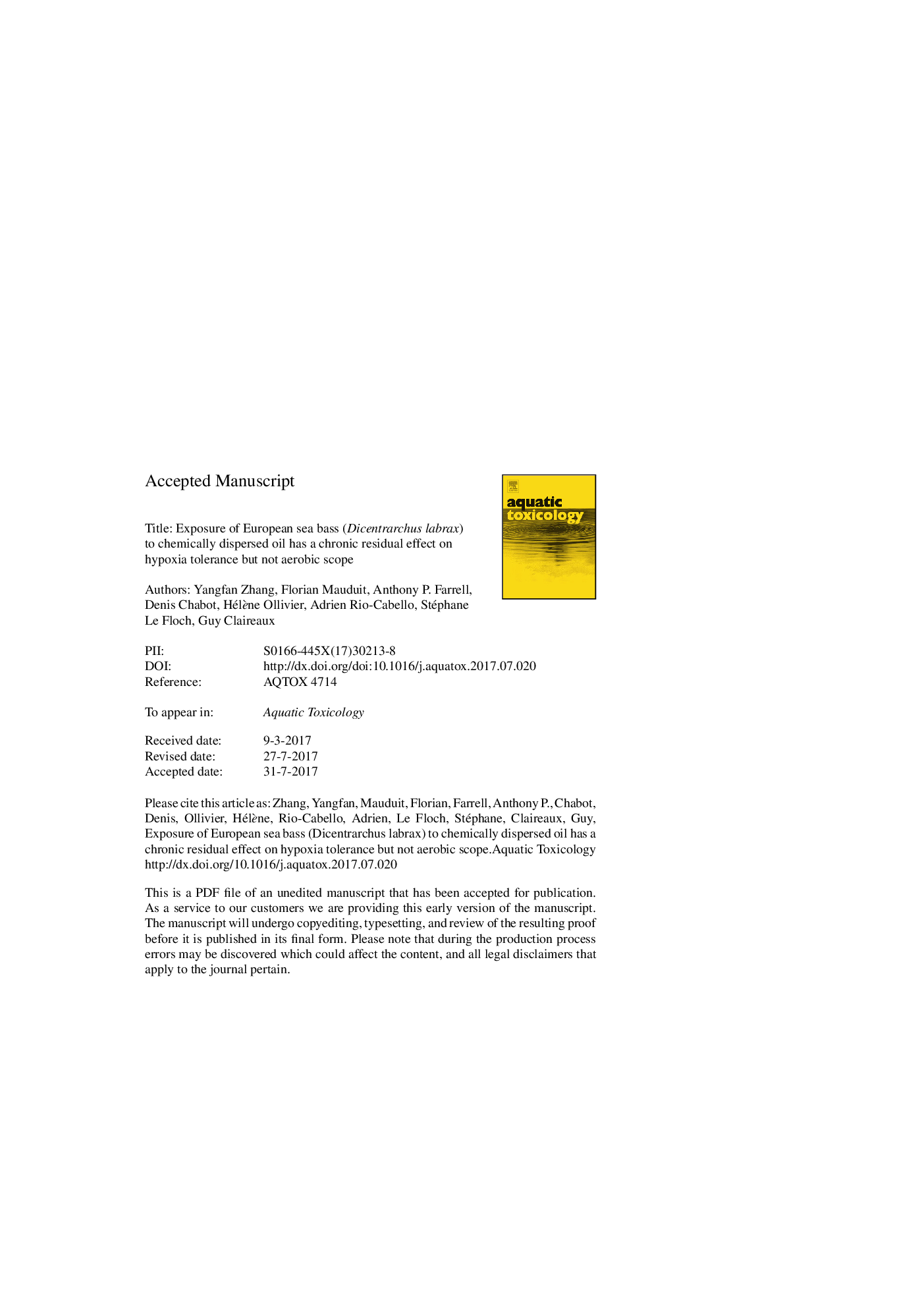| کد مقاله | کد نشریه | سال انتشار | مقاله انگلیسی | نسخه تمام متن |
|---|---|---|---|---|
| 5764099 | 1625914 | 2017 | 37 صفحه PDF | دانلود رایگان |
عنوان انگلیسی مقاله ISI
Exposure of European sea bass (Dicentrarchus labrax) to chemically dispersed oil has a chronic residual effect on hypoxia tolerance but not aerobic scope
دانلود مقاله + سفارش ترجمه
دانلود مقاله ISI انگلیسی
رایگان برای ایرانیان
موضوعات مرتبط
علوم زیستی و بیوفناوری
علوم کشاورزی و بیولوژیک
علوم آبزیان
پیش نمایش صفحه اول مقاله

چکیده انگلیسی
We tested the hypothesis that the chronic residual effects of an acute exposure of European sea bass (Dicentrarchus labrax) to chemically dispersed crude oil is manifest in indices of hypoxic performance rather than aerobic performance. Sea bass were pre-screened with a hypoxia challenge test to establish their incipient lethal oxygen saturation (ILOS), but on discovering a wide breadth for individual ILOS values (2.6-11.0% O2 saturation), fish were subsequently subdivided into either hypoxia sensitive (HS) or hypoxia tolerant (HT) phenotypes, traits that were shown to be experimentally repeatable. The HT phenotype had a lower ILOS and critical oxygen saturation (O2crit) compared with the HS phenotype and switched to glycolytic metabolism at a lower dissolved oxygen, even though both phenotypes accumulated lactate and glucose to the same plasma concentrations at ILOS. As initially hypothesized, and regardless of the phenotype considered, we found no residual effect of oil on any of the indices of aerobic performance. Contrary to our hypothesis, however, oil exposure had no residual effect on any of the indices of hypoxic performance in the HS phenotype. In the HT phenotype, on the other hand, oil exposure had residual effects as illustrated by the impaired repeatability of hypoxia tolerance and also by the 24% increase in O2crit, the 40% increase in scope for oxygen deficit, the 17% increase in factorial scope for oxygen deficit and the 57% increase in accumulated oxygen deficit. Thus, sea bass with a HT phenotype remained chronically impaired for a minimum of 167Â days following an acute 24-h oil exposure while the HS phenotypes did not. We reasoned that impaired oxygen extraction at gill due to oil exposure activates glycolytic metabolism at a higher dissolved oxygen, conferring on the HT phenotype an inferior hypoxia resistance that might eventually compromise their ability to survive hypoxic episodes.
ناشر
Database: Elsevier - ScienceDirect (ساینس دایرکت)
Journal: Aquatic Toxicology - Volume 191, October 2017, Pages 95-104
Journal: Aquatic Toxicology - Volume 191, October 2017, Pages 95-104
نویسندگان
Yangfan Zhang, Florian Mauduit, Anthony P. Farrell, Denis Chabot, Hélène Ollivier, Adrien Rio-Cabello, Stéphane Le Floch, Guy Claireaux,